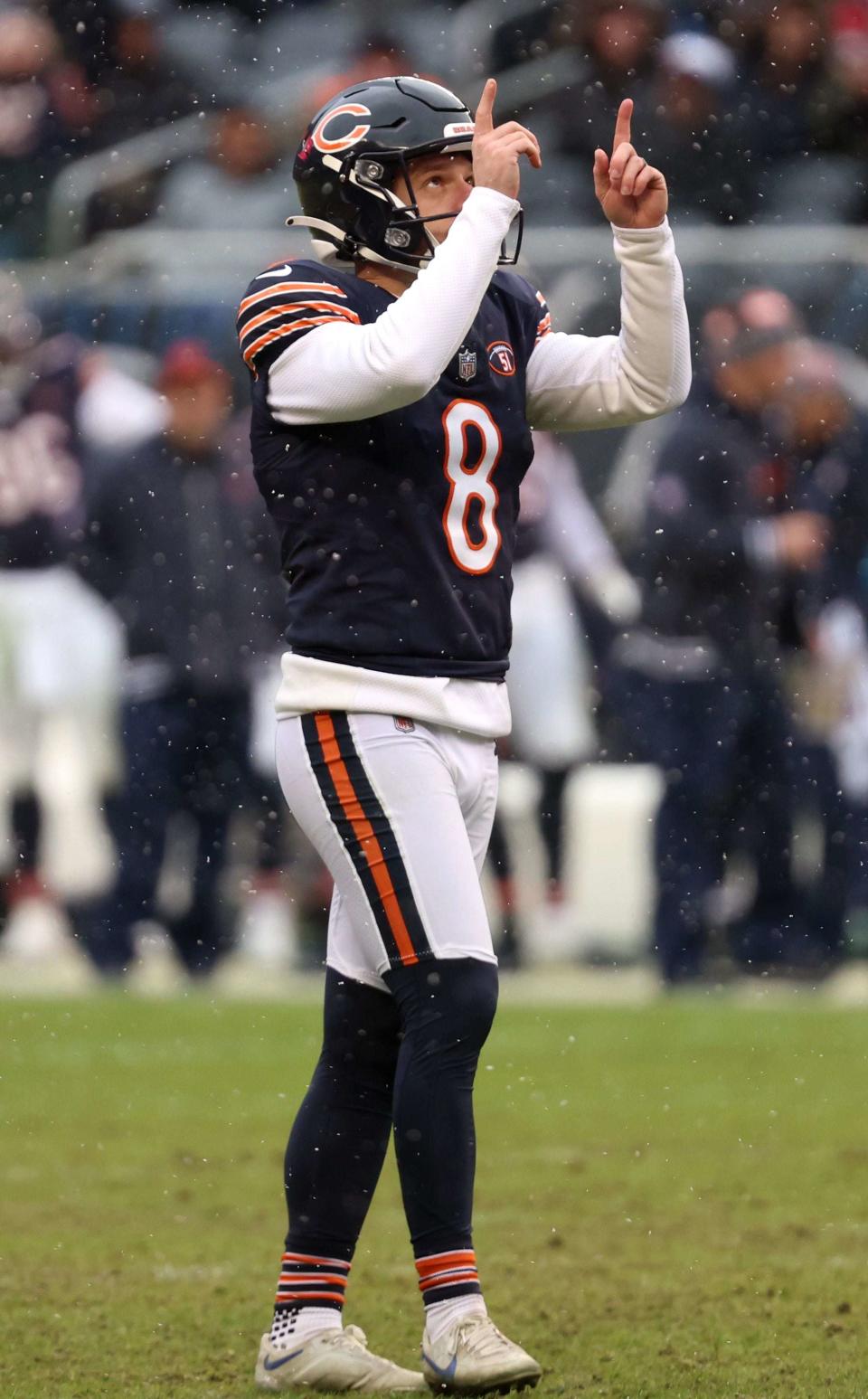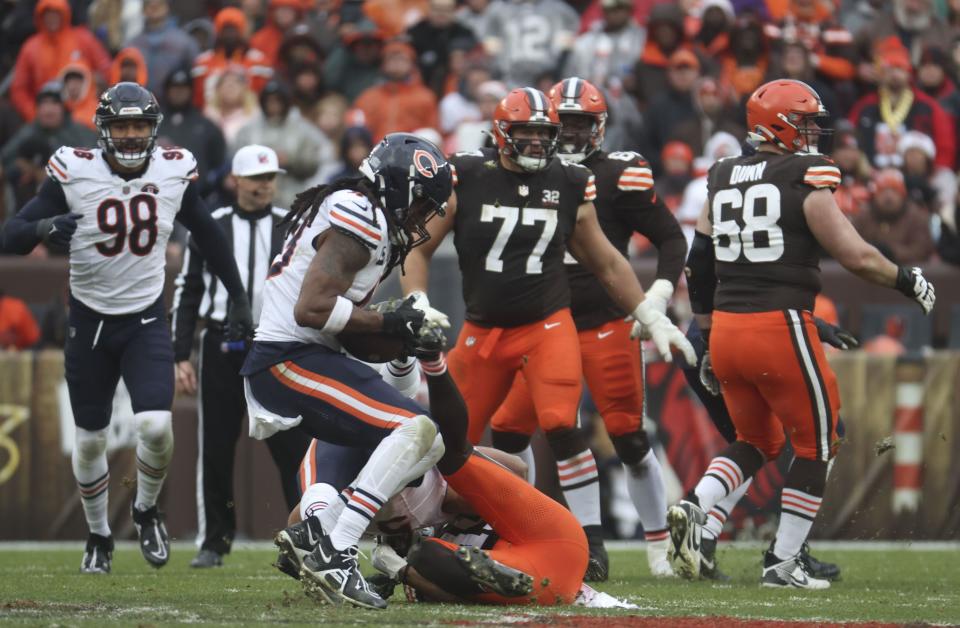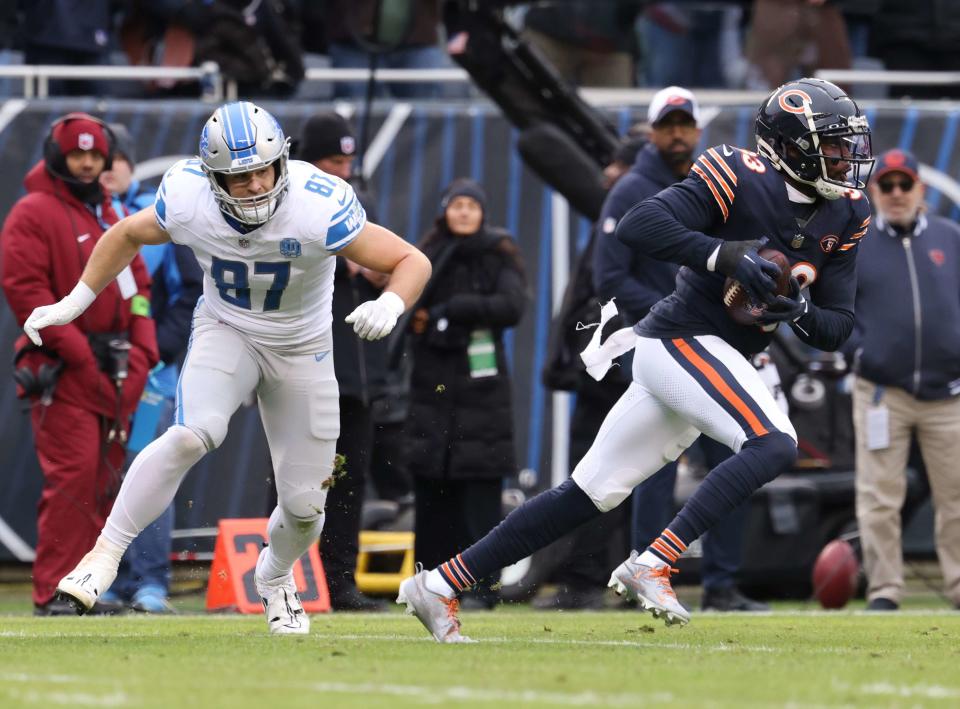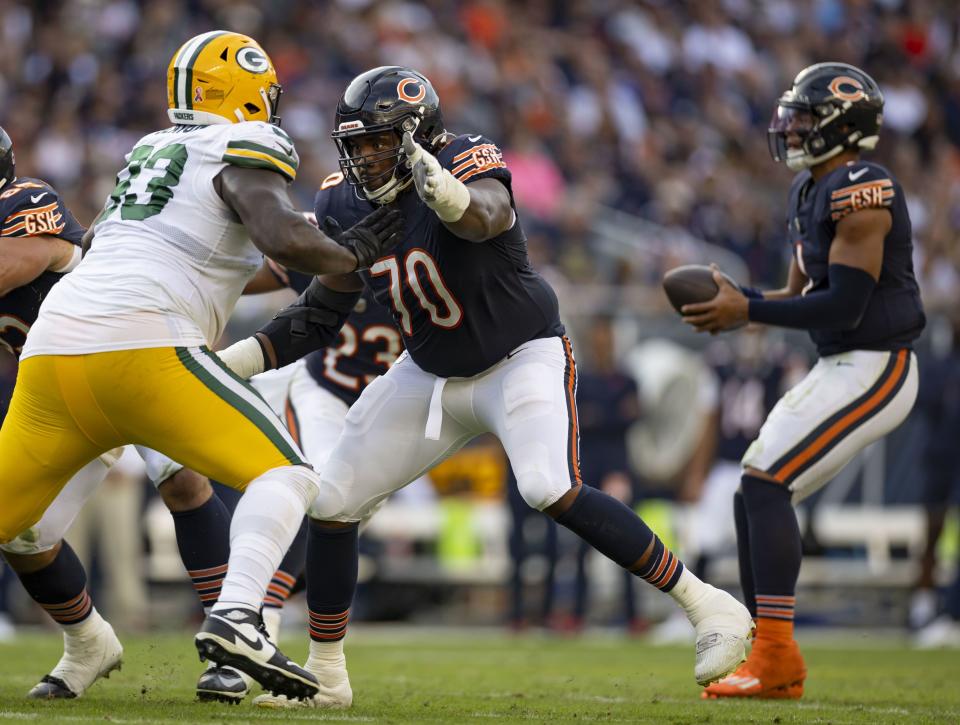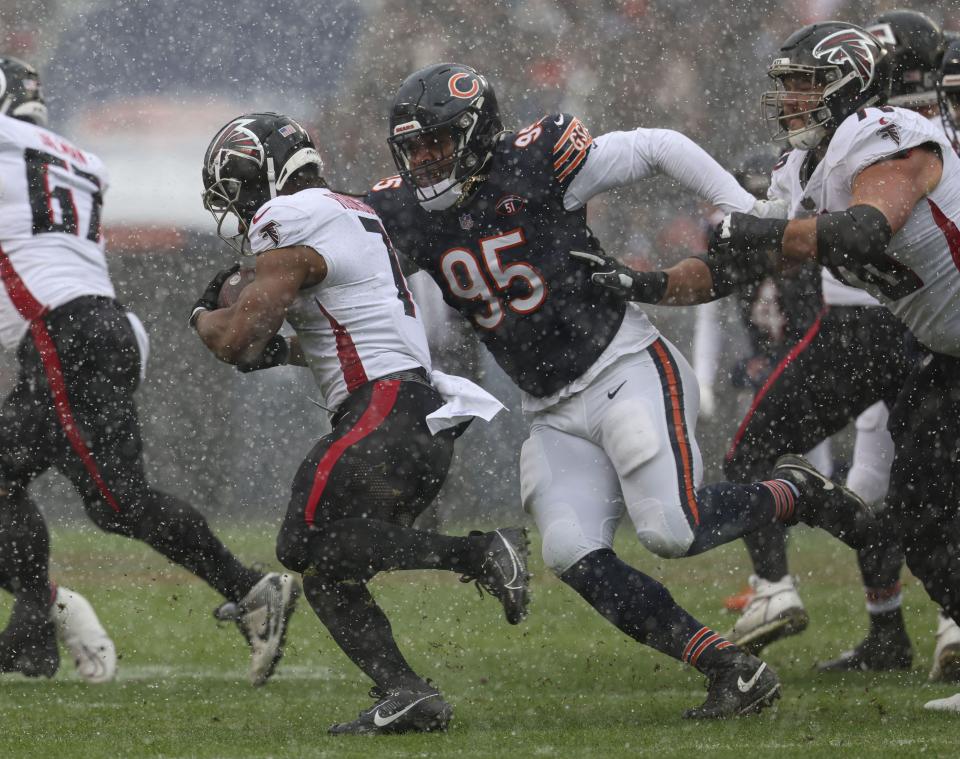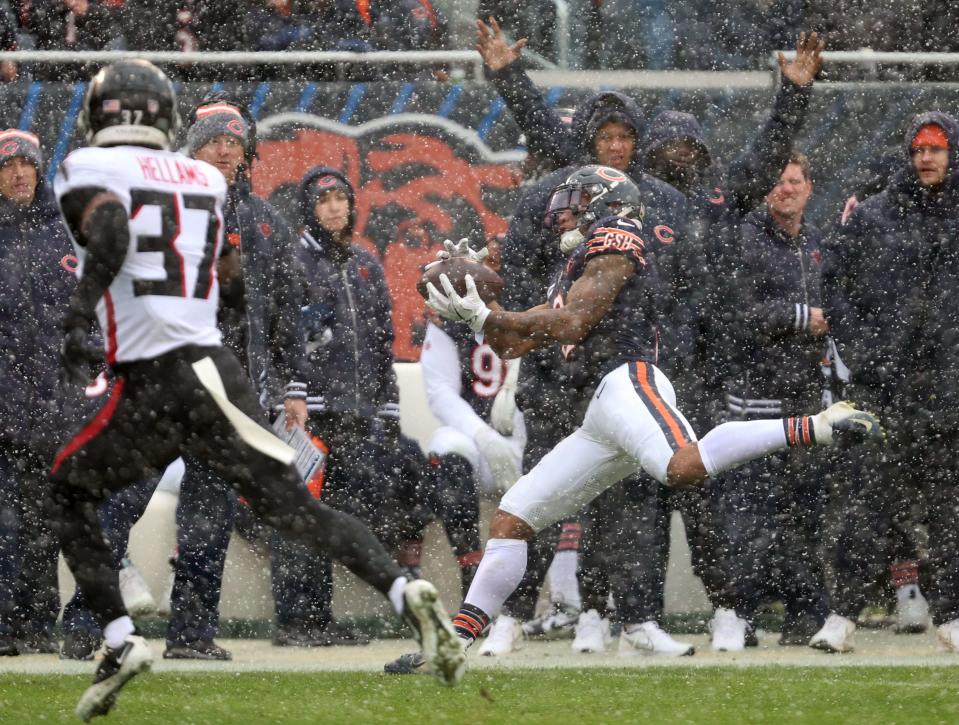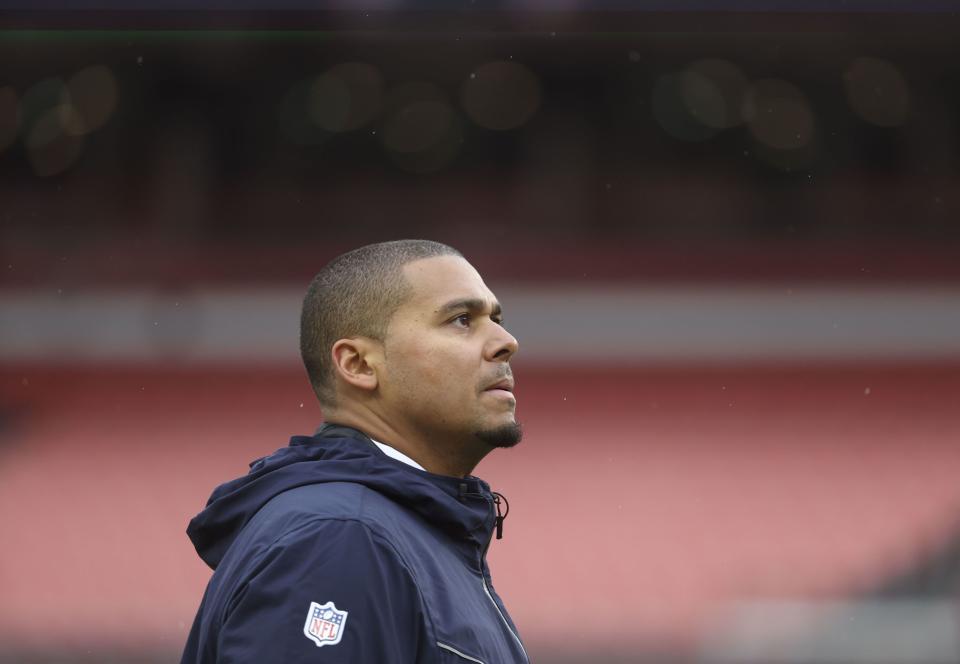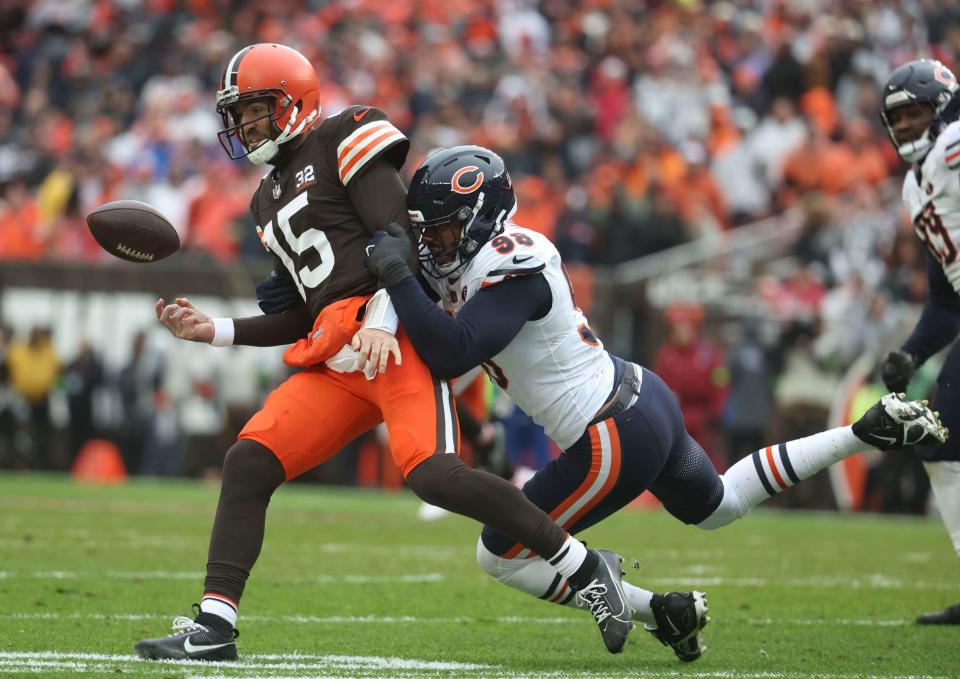Column: A look at 10 developments from the Chicago Bears season before we turn our attention to a pivotal offseason
A news-filled Chicago Bears season ends Sunday with a trip to Lambeau Field, where the Green Bay Packers have a playoff bid on the line.
After that the Bears will quickly turn the page to what could be a seismic offseason at Halas Hall.
General manager Ryan Poles already knows he owns the No. 1 pick in 2024, and the first order of business will be announcing the future of coach Matt Eberflus and his staff. The team’s improvements since November surely help Eberflus, but there is one final piece to the evaluation puzzle before attention turn to free agency and the draft.
What does Poles plan to do with his picks? Will he choose to build around quarterback Justin Fields or chart a path with a rookie and a roster that’s far better than most teams have when choosing a passer at No. 1? The clearest options are to keep Fields and trade down for even more picks or to choose a quarterback with the top pick.
Before we go headlong into the biggest Bears offseason since ... the previous one, let’s highlight some developments and look at some nuggets from the 2023 season.
1. Among the lessons we should take from the season is that Poles is fearless in his bid to build the Bears into a position where they can enjoy sustained success.
That’s one element of the Oct. 31 trade for defensive end Montez Sweat that probably hasn’t gotten enough attention. The deal was made only 25 days after Poles shipped wide receiver Chase Claypool to the Miami Dolphins.
Poles was roundly criticized — and rightfully so — for the November 2022 trade with the Pittsburgh Steelers for Claypool, which cost him the No. 32 pick in last year’s draft. Claypool made no impact last season, and in the first few weeks of this season it was clear he wasn’t a match for the team’s culture.
Many GMs of a 2-6 team would have been wary of going shopping again with significant draft capital. Poles could have added a bigger name — Chase Young, whom the Washington Commanders also were shopping — at a smaller price. He wanted the better player in Sweat, was willing to meet the asking price and didn’t care that it came on the heels of such a one-sided trade with the Steelers.
Some panned the deal for Sweat, noting the Bears would have to overpay to sign him to an extension on top of the big-time draft compensation they gave the Commanders. That’s exactly what happened in a matter of days, when Sweat signed a four-year, $98 million extension.
Funny what can happen in two months. It doesn’t look like they overpaid now. A defense that had 10 sacks through the first eight games has 19 over the last eight. The Bears have 18 takeaways over the last seven games. They’ve improved dramatically in nearly every key defensive metric.
It would have been easy for Poles to sit on his draft capital at the end of October with the season appearing on its way to a wreck. He proved to be daring, and that’s something to keep in mind when considering what options he might choose moving forward.
2. Sweat has been better than expected in making those around him better, and wide receiver DJ Moore has been everything the Bears hoped for and probably more.
Moore enters the finale with 92 receptions for 1,300 yards and eight touchdowns. Had Fields not missed four games with a right thumb injury in the middle of the season and if a December ankle injury hadn’t slowed Moore, it would be easy to imagine him near 1,500 yards and more than 100 catches already.
Sweat turns 28 in September before next season begins. Moore will be 27 in April. They’re in the prime years of their career. The trade with the Carolina Panthers to acquire Moore and the top pick in the upcoming draft will be a gift that continues to give.
3. Fields has remained emotionally unflappable during a season with intense pressure.
Shortly after his comments about “robotic” play in September, Fields threw four touchdown passes in consecutive games against the Denver Broncos and the Commanders. The most impressive thing he has done since returning from the thumb injury is reduce turnovers and sacks, showing improved ability to seek a target downfield while on the move.
He’s coming off a terrific game in which he carved up the Atlanta Falcons’ man coverage, and the Packers likely will test him with a heavy dose of zone principles. It’s one more game for Poles and his staff to consider — and an important one if they’re putting additional weight on Fields’ most recent performances.
4. The single greatest improvement — and it’s no contest — is the run defense.
The Bears enter Week 18 No. 1 in the league, allowing 84 rushing yards per game, a year after Eberflus’ front was routinely trampled and opponents averaged 157.3 yards. That’s proof positive the base Tampa-2 scheme isn’t a sieve when it comes to stopping the run.
As former Bears offensive coordinator John Shoop used to say, it takes a village to run the ball. The same is required to stop the run, and the Bears have some better villagers in nose tackle Andrew Billings, end DeMarcus Walker and linebackers Tremaine Edmunds and T.J. Edwards. That’s a nice sign the personnel department can identify and acquire pieces that fit the coaches and scheme.
That sounds simple, but the process isn’t always so well-matched.
5. It will be interesting to see what happens on the offensive line in the offseason.
The Bears know they have to address the center position and they will have options. The future of left tackle Braxton Jones will be a hot topic, particularly if the team opts to keep Fields and trade down from No. 1. Jones had a rough ride against Myles Garrett three weeks ago in Cleveland, but Garrett has that effect on nearly every opponent.
“You talk about personality differences from Year 1 to Year 2,” offensive coordinator Luke Getsy said of Jones. “That’s been reflective in his play. Here’s a guy who, he got here, was kind of quiet, didn’t run off the ball, wasn’t real physical, but then he got this confidence about him last year and started believing in his game and that showed up this year.
“You see the way he runs off the rock. He got called for a false start (against the Falcons) — that’s because he was anticipating the snap count and maybe Lucas (Patrick) was just a tick late with (the snap). That wasn’t a (normal) false start — he’s ready to go rip. He’s ready to run.
“(It) has just been really cool to see him grow and have that mentality. Super smart guy, so he can handle a lot. But the mentality part of it has been the coolest part about his game and the way his game is translating.”
With Darnell Wright at right tackle and Teven Jenkins at left guard, the Bears have youth up front that should be better moving forward.
6. The roster is filled with young players, and the secondary has the greatest concentration of youth.
Rookie cornerbacks Tyrique Stevenson and Terell Smith have stood out and gotten a ton of playing time. Pro Bowl selection Jaylon Johnson is only 24 as he completes his rookie contract, headed toward a likely contract extension or franchise tag. Nickel cornerback Kyler Gordon has taken off in his second season once allowed to focus on only one position, and strong safety Jaquan Brisker is also in his second season.
It’s arrow up across the board, and the only question is how the team will address free safety with Eddie Jackson signed for $14 million in 2024 and a decision due on his future.
The secondary is making plays on the ball, and an upgraded pass rush with Sweat is a key reason. But it’s also because these young players have adapted to the scheme and grown as the season progressed.
7. Some folks around the league were a little leery when the Bears dumped big money into not one but two linebackers.
Edmunds (four years, $72 million) and Edwards (three years, $19.5 million) were signed to compensate for the departure of Roquan Smith and to augment the position. The reason for the skepticism was simple. Off-the-ball linebacker is not considered a premium position, even if the weak-side spot — Edwards in this case — is a key component in Eberflus’ scheme.
Like everyone else on the defense, they’ve been more impactful since Sweat arrived. Edwards has been consistent versus the run, in coverage and as an occasional extra rusher. Edmunds has improved over the course of the season as he fit into the scheme. Edmunds turns 26 in May, and Edwards will be 28 in August.
8. After the major payday for Sweat and modest extensions for Billings and kicker Cairo Santos, the Bears are eighth in available cap space for 2024.
They have $38.3 million available, according to overthecap.com. That number should climb before the new league year starts, too, meaning the Bears will have plenty of space to get a deal done with Johnson and be nimble at other positions they deem necessary.
Poles’ strategy has been to make the larger contracts flat as they move forward in terms of the cap hit. Cap-strapped teams will backload deals to push off larger cap hits. The Bears’ approach, something Poles did from the start, should keep them in a healthy cap situation for some time before a slew of young players reaches the point where they have to be paid.
This is always easier to execute when the quarterback is on a rookie deal, as Fields is.
9. If you’re looking to stump your buddy, ask who was the last Bear to execute a fake on special teams.
The team has gone 57 consecutive games without attempting a fake. The last attempt came in Week 9 of the 2020 season when personal punt protector DeAndre Houston-Carson received a direct snap and handed off to linebacker Barkevious Mingo on a reverse.
Mingo zipped around the right side for 11 yards and a first down. The play, on fourth-and-6 from the Bears 36-yard line, was their longest run of a 24-17 loss to the Tennessee Titans.
The play name? Roger. Pretty simple. “Roger” told the line the play was designed to go to the right. “Larry” was the call for a fake to the left.
The Bears were trailing 3-0 in the second quarter. The drive soon stalled and coach Matt Nagy elected to punt for real on fourth-and-2 from the Titans 45.
10. A victory over the Packers would give the Bears an 8-9 finish, a five-game improvement over 2022.
Since the AFL-NFL merger in 1970, the Bears have improved by five wins or more on four occasions (not including the strike-shortened 1982 season).
8 wins: 2000 (5-11) to 2001 (13-3)
7 wins: 2017 (5-11) to 2018 (12-4)
6 wins: 2004 (5-11) to 2005 (11-5)
5 wins: 1989 (6-10) to 1990 (11-5)
